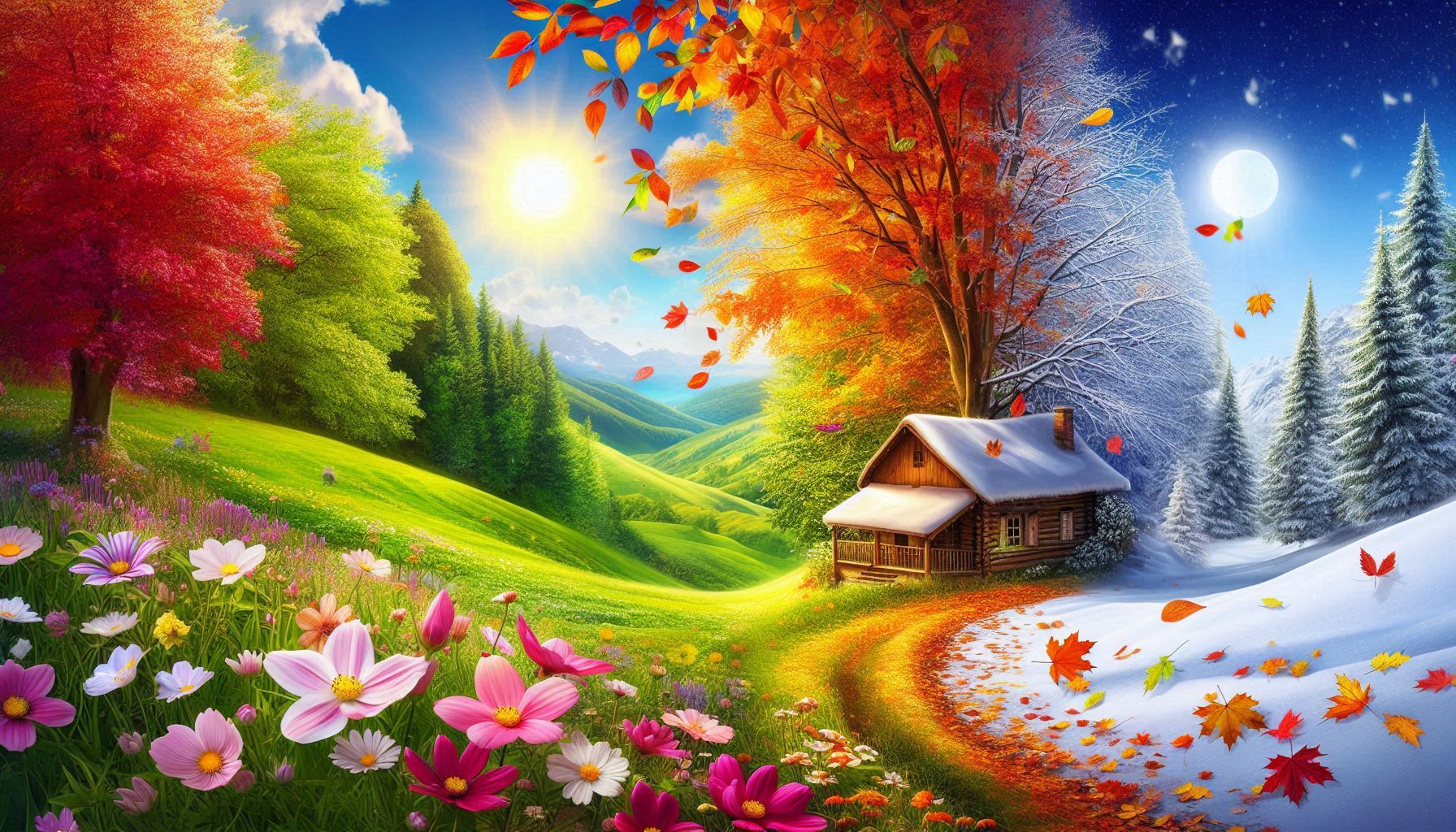When studying the effects of the Earth’s revolution, the concept of seasons comes up. The seasons are apparently a division of the year into several periods based on natural phenomena and climatic changes that occur on an annual cycle. In Japan, we call the four seasons spring, summer, autumn and winter, but this is due to the relationship between the tilt of the rotation axis and latitude. In addition to the four seasons, there are two seasons, such as a rainy season and a dry season, and in some places there are three or six seasons.
https://eco.mtk.nao.ac.jp/koyomi/wiki/B5A8C0E1.html
Using the vernal equinox, summer solstice, autumnal equinox, and winter solstice as a guide, which are determined by the relationship between the rotation and revolution of the Earth, as a guide, the amount of sunlight entering the Earth from the sun changes, causing changes in temperature, which then creates winds to balance the heat, which then creates ocean currents and clouds, resulting in seasonal nutrient circulation and rainfall and snowfall.In addition, because rocks and seawater have different specific heat capacities, such as how easily they heat up or cool down, some change temperature quickly and others slowly, which seems to give rise to regional climate diversity.
The seasons seem to be closely related to the activities of many living organisms. They seem to choose the most appropriate time for food to be abundant according to seasonal changes, such as the timing of plant germination, flowering, fruiting, and leaf fall, the migration season of birds and butterflies, the nest-building, egg-laying, and breeding seasons of insects and animals, and the periods of hibernation and dormancy. The seasonal changes in the activities of these organisms are called biological phenology.
https://adaptation-platform.nies.go.jp/ccca/monitoring/phenology
The main factors that allow us to sense seasonal changes seem to be changes in sunlight, temperature, and precipitation. The ability to sense changes in the length of day and night is called photoperiodism. The photoperiodism of plants seems to place more importance on the length of night than on the day, and flower buds need time without light to form. After the flower buds are ready, plants that flower when the days get shorter, such as morning glories, rice, and soybeans, are called short-day plants, while plants that flower when the days get longer, such as wheat, radish, and spinach, are called long-day plants.It seems that animals with different photoperiods can have long-day seasonal breeding such as horses and wolves, and short-day seasonal breeding such as sheep and goats.
https://www.higashiyama.city.nagoya.jp/blog/2020/05/post-4163.html
Regarding temperature changes, cold-blooded fish, amphibians, and reptiles will be strongly influenced by the seasons, and summer hibernation and winter hibernation are also likely to be strongly influenced by temperature. Fish, amphibians, and reptiles seem to breed mostly from spring to early summer, and amphibians in particular seem to be strongly influenced by rainy periods. Birds also breed at a similar time, and there seems to be a migration season before and after breeding, and a molting season at other times, so it seems like they are busy with a lot of events.
It seems that the seasons have an effect not only on living things, but also on the Earth’s interior. Seismic activity in the San’in region varies seasonally, and is apparently more active in the spring and autumn. Earthquakes are more likely to occur due to underground changes caused by the melting snow in the spring and weakening of faults due to heavy rainfall in the autumn.
https://www.eri.u-tokyo.ac.jp/research/10441
The magnetosphere also seems to have seasonal variations, becoming more active in the spring and fall and quieter in the summer and winter. As the direction of the solar wind changes as the Sun orbits the Sun, it seems that the way it is received by the magnetosphere will differ depending on whether it comes from the pole or the side.
I researched seasons, and it seems that the influence of the seasons is wide-ranging, from many living things, air and ocean currents, and even underground to the magnetosphere. It’s a little mysterious that the annual seasonal fluctuations are connected to the cycles of many living things and to the beauty of the four seasons. In the sense that they fluctuate within a certain range, the seasons are probably one of those exquisite fluctuations. Seasons are amazing. The Earth with its diverse cycles is amazing.


